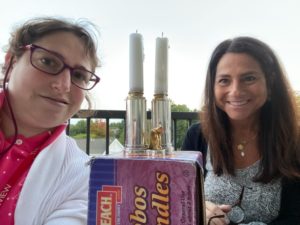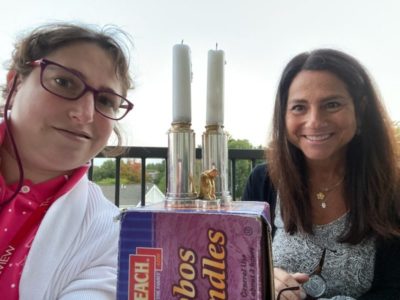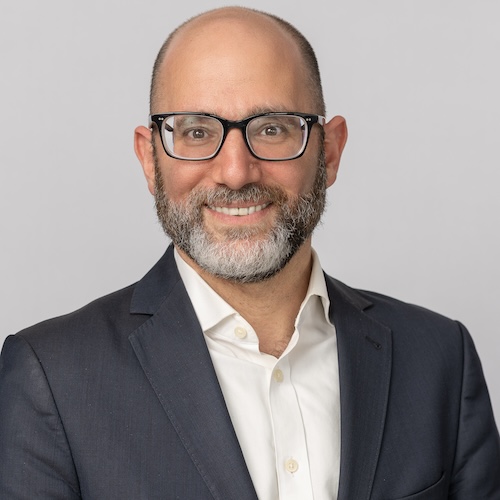
5781 Shabbat Shuvah Drash from Rabbi Rachel Saphire
Maybe you haven’t noticed, but every year I preach on this Shabbat. And I start the sermon with the exact same words: I love preaching on Shabbat Shuvah, the Shabbat between Rosh Hashanah and Yom Kippur. No, it’s definitely not because this is when rabbis are supposed to give the longest sermon of the year (according to the tradition of our sages). I.just.love preaching on this Shabbat. You may think that sounds absurd. Some rabbis grumble about writing a sermon on the Shabbat between the holidays when we already have High Holy Day sermons to write. Not the case either. I love preaching on Shabbat Shuvah every year because I have a tradition around it that I find meaningful…and I hope you do, too. I like to search all year for a story that is perfect for this precious time between Rosh Hashanah and Yom Kippur. Usually the story speaks for itself. And usually I come across this story, that I know is going to be just perfect for the next Shabbat Shuvah, very early in the previous year. This year I had a story lined up this summer, but a few weeks ago, a congregant, sent me this story… and it won out for the best Shabbat Shuvah story of the year. I’ll put a plug in. Feel free to send your stories for Shabbat Shuvah 5782.
So here it is.
“Dear Rabbi Saphire,
As I write this note to you, I am not sure of the exact meaning of this story, but it has great meaning because it is a part of my story…
I ran into [another congregant] in the early summer one evening outside of Truly’s Yogurt in Wellesley. I didn’t really know her well from the temple, but I knew her. I said hello, and we immediately shared our love of TBE and that we knew you and how much we missed our beautiful synagogue. We exchanged numbers and met many more summer evenings at Truly’s where we would wait in line and chat and share the common bond that we both missed so much, our TBE, our other home. For me, it’s been a special summer getting to know this congregant.
Last Friday, she asked me to come over to sit outside and watch the zoom Shabbat service together. I thought this was a great idea! I would bring candles and some grape flavored propel. She had a challah.
As I was packing up to head over to her place, I heard my mother’s voice saying ‘those candle sticks need a polish’ so I decided to do just that and polish them with silver polish I had under the sink. Well that meant that I needed to look for the polishing cloth in the dining room. It was in that drawer that I rediscovered a pair of traveling candlesticks that my parents had given me more than twenty years ago. I realized the opportunity to use these for the first time and was so excited. They seemed like a silly gift all those years ago, who has traveling candlesticks? When would I ever use these? Well the time had finally come.
As I polished them up I realized they were engraved with my Hebrew name and the day of my birthday in 1993 which they were made for. The Israeli Artisan who made many Judaica items for my parents had signed them with his name as well.
This serendipitous discovery was incredibly joyful for me.
I miss Shabbat in person at TBE. I was so lucky to find and connect with this congregant this summer and spend a Shabbat with her! The joy of the candlesticks were an incredible bonus. As I reflect on this special summer connection I made and the rediscovery of what immediately became the most special traveling candlesticks, I realized this was my special summer path to shalom! I never lit Shabbat candles before my mom died. Now it’s another way she lives in my heart.”
This congregant may not have first realized the significance of this story, but now it is more clear, at least to me.
You have probably heard us mention over and over again that our temple’s vision is that we all be on our own path towards shalom. But I realized something upon hearing this story. To be on the path towards shalom, you have to be on a path. Meaning, you have to INTENTIONALLY be on a path towards seeking shalom. I hear many moments of intention in this story. First, it is this congregant’s engagement in temple life, and connection with others when she is with the community, that led her to recognize another congregant in line at Truly Yogurt. She could have just said hi and went about her day, but she engaged this congregant in conversation, inviting connection. So much that they ended up with a Shabbat date a week later. Then, there was the intention to CREATE Shabbat. They weren’t going to just sit together while watching services, they made a plan to MAKE Shabbat—a mitzvah—with candles, juice and challah. Then while packing up to head to services she tuned in to her mother’s presence in her life, bringing her mother into the present moment and “hearing” her voice about those tarnished candlesticks. It was that intention that led her to find those traveling candlesticks that had sat in the drawer since 1993. You hear what I’m hearing?
While I pray that simply living our lives will lead us on a path of shalom this year, I truly know that living our lives with intention is likely the path that will lead us towards a greater sense of shalom.
In Hebrew, the word for intention is kavanah. We use it when we say we are “praying with intention,” or a meditation or reflection is simply called a kavanah. But literally the word kavanah means “direction” or “purpose” and refers to directing our mind or soul towards something purposeful. It is the opposite of doing something by rote, or living in a mechanical, go through the motions kind of way. The concept of kavanah can be applied to almost any mitzvah or action. In fact, Jewish scholars generally teach that proper kavanah is essential to the performance of mitzvot. The Mishnah rules that if someone happens to be passing by a synagogue at the time that the shofar is blown on Rosh Hashanah, they do not fulfill the mitzvah of hearing the shofar if they only hear it incidentally. They have to be intentionally listening.
Abraham Joshua Heschel, in his classic work God in Search of Man, explains that performing a mitzvah without proper kavanah is inadequate because while it might have a positive effect on the world, it leaves the doer of the mitzvah unaffected. The purpose of Jewish practice, he writes, is transformation of the soul. Transformation, obtaining a greater sense of shalom, comes with great intention.
I was so inspired by this story and this note that I wrote back to ask permission to share the story. I knew it had won the prize for Shabbat Shuvah story 5781, even more importantly it was a story that had to be shared. I got the response: “Thank you! I have one pair of candles left from the box I took from my mother’s cape house when we cleaned it out after she died. I think I will save them to light on Shabbat Shuva.” And so I thought, “You have to light these candles for all of us.” And I invited her to light Shabbat candles with her new TBE friend on this Shabbat. I was thrilled to ask Tobi Marram and Julie Belsky to light our candles that evening.
Julie and Tobi, thank you for your inspiring story. May your beautiful intentions, your will to find meaning in each day, your paths of seeking shalom, peace and wholeness, inspire us all to do the same.
Ken yehi ratzon


